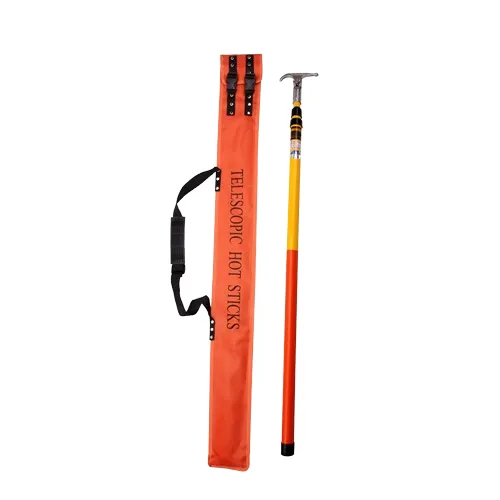
-
 Afrikaans
Afrikaans -
 Albanian
Albanian -
 Amharic
Amharic -
 Arabic
Arabic -
 Armenian
Armenian -
 Azerbaijani
Azerbaijani -
 Basque
Basque -
 Belarusian
Belarusian -
 Bengali
Bengali -
 Bosnian
Bosnian -
 Bulgarian
Bulgarian -
 Catalan
Catalan -
 Cebuano
Cebuano -
 Corsican
Corsican -
 Croatian
Croatian -
 Czech
Czech -
 Danish
Danish -
 Dutch
Dutch -
 English
English -
 Esperanto
Esperanto -
 Estonian
Estonian -
 Finnish
Finnish -
 French
French -
 Frisian
Frisian -
 Galician
Galician -
 Georgian
Georgian -
 German
German -
 Greek
Greek -
 Gujarati
Gujarati -
 Haitian Creole
Haitian Creole -
 hausa
hausa -
 hawaiian
hawaiian -
 Hebrew
Hebrew -
 Hindi
Hindi -
 Miao
Miao -
 Hungarian
Hungarian -
 Icelandic
Icelandic -
 igbo
igbo -
 Indonesian
Indonesian -
 irish
irish -
 Italian
Italian -
 Japanese
Japanese -
 Javanese
Javanese -
 Kannada
Kannada -
 kazakh
kazakh -
 Khmer
Khmer -
 Rwandese
Rwandese -
 Korean
Korean -
 Kurdish
Kurdish -
 Kyrgyz
Kyrgyz -
 Lao
Lao -
 Latin
Latin -
 Latvian
Latvian -
 Lithuanian
Lithuanian -
 Luxembourgish
Luxembourgish -
 Macedonian
Macedonian -
 Malgashi
Malgashi -
 Malay
Malay -
 Malayalam
Malayalam -
 Maltese
Maltese -
 Maori
Maori -
 Marathi
Marathi -
 Mongolian
Mongolian -
 Myanmar
Myanmar -
 Nepali
Nepali -
 Norwegian
Norwegian -
 Norwegian
Norwegian -
 Occitan
Occitan -
 Pashto
Pashto -
 Persian
Persian -
 Polish
Polish -
 Portuguese
Portuguese -
 Punjabi
Punjabi -
 Romanian
Romanian -
 Russian
Russian -
 Samoan
Samoan -
 Scottish Gaelic
Scottish Gaelic -
 Serbian
Serbian -
 Sesotho
Sesotho -
 Shona
Shona -
 Sindhi
Sindhi -
 Sinhala
Sinhala -
 Slovak
Slovak -
 Slovenian
Slovenian -
 Somali
Somali -
 Spanish
Spanish -
 Sundanese
Sundanese -
 Swahili
Swahili -
 Swedish
Swedish -
 Tagalog
Tagalog -
 Tajik
Tajik -
 Tamil
Tamil -
 Tatar
Tatar -
 Telugu
Telugu -
 Thai
Thai -
 Turkish
Turkish -
 Turkmen
Turkmen -
 Ukrainian
Ukrainian -
 Urdu
Urdu -
 Uighur
Uighur -
 Uzbek
Uzbek -
 Vietnamese
Vietnamese -
 Welsh
Welsh -
 Bantu
Bantu -
 Yiddish
Yiddish -
 Yoruba
Yoruba -
 Zulu
Zulu


Jul . 27, 2024 11:02 Back to list
Secure Tension Wire Clamp for Enhanced Stability in Fencing and Electrical Applications
The Importance of Tension Wire Clamps in Modern Engineering
In the realm of engineering and construction, tension wire clamps serve a crucial role in a wide array of applications. These specialized devices are designed to secure wire and cable, ensuring that structures maintain their integrity under varying load conditions. As technology progresses and construction practices evolve, the importance of tension wire clamps cannot be underestimated.
What Are Tension Wire Clamps?
Tension wire clamps are mechanical devices used to hold and stabilize wire, typically used in applications involving tensioned cables or wires. They come in various materials, including steel, aluminum, and composite materials, each offering different benefits in terms of strength, weight, and corrosion resistance. The primary function of these clamps is to ensure that wire remains taut, thereby preventing slack that could lead to structural failure.
Applications in Engineering
Tension wire clamps have found their application in numerous fields. In construction, they are extensively used in the erection of towers, bridges, and cables, where stability is paramount. For instance, in suspension bridges, tension wires maintain the bridge deck's position and load balance. Moreover, in telecommunications, tension wire clamps secure the cables that hold up antennae and other devices, ensuring reliable communications.
In addition to civil engineering, tension wire clamps are also vital in the electrical industry. They help in the utility sector to secure power lines and ensure that they remain adequately tensioned to prevent sagging during adverse weather conditions. This role is particularly significant in areas prone to severe weather, as reliable power transmission is critical for communities.
Benefits of Using Tension Wire Clamps
tension wire clamp

The advantages of using tension wire clamps in various applications are manifold. Firstly, they provide enhanced safety. By ensuring that wires are properly secured and tensioned, these clamps help prevent accidents that could result from falling cables or structural failure. This is an increasingly important consideration in the face of more stringent safety regulations in construction and engineering.
Secondly, tension wire clamps contribute to the longevity of structures. Proper tensioning of wires helps to distribute loads evenly across the structure, preventing localized stress points that can lead to wear and tear over time. As a result, structures can achieve longer lifespans and reduced maintenance costs.
Thirdly, tension wire clamps are relatively easy to install and adjust. They offer flexibility during construction, allowing for fine-tuning of wire tension. This adaptability is crucial in dynamic environments where conditions can change rapidly.
Challenges and Considerations
While tension wire clamps are extremely useful, they come with challenges that engineers must consider. The selection of the appropriate type of clamp for a specific application is vital. Factors such as load capacity, weather conditions, and material compatibility must be taken into account to ensure optimal performance. Furthermore, regular maintenance and inspection of clamps are necessary to identify any signs of wear or damage that could compromise their effectiveness.
Conclusion
In conclusion, tension wire clamps are indispensable components in modern engineering and construction. Their role in ensuring the stability and safety of structures cannot be overstated. As industries continue to innovate and explore new possibilities in engineering, the demand for reliable and effective tensioning solutions like wire clamps will only increase. By understanding their importance and application, engineers and construction professionals can better ensure the integrity of their projects, paving the way for safer and more durable infrastructures.
Latest news
What Are Construction Tools and How Are They Used?
NewsJul.11,2025
Professional-Grade Duct Rodding Tools for Superior Cable Installation
NewsJul.11,2025
Enhancing Safety and Efficiency with Modern Hot Stick Solutions
NewsJul.11,2025
Empowering Cable Installation with Advanced Rodder Solutions
NewsJul.11,2025
Elevate Your Cable Installation Projects with Cable Pulling Tools
NewsJul.11,2025
Efficient Cable Handling Solutions: Cable Rollers for Sale
NewsJul.11,2025











